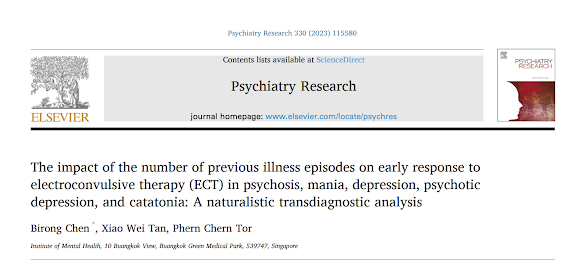Aphasia After ECT: Case Report in JECT

Out on PubMed, from clinicians in France , in JECT is this case report: Aphasia Following Electroconvulsive Therapy: A Case Report With a Literature Review of Published Cases. Kassir S, Endomba FT, Amghar C, Guillet C. J ECT. 2023 Dec 1;39(4):275-276. doi: 10.1097/YCT.0000000000000940. Epub 2023 Jun 5. PMID: 37310129 Review. The LTE is here . And here: Transient neurological dysfunctions after ECT are always interesting, scary (justifiably often prompting brain imaging), and usually completely benign. Here, our French colleagues give us a pretty good clinical story, but leave us a bit disappointed with the vagueness of the most crucial detail; they say the symptoms lasted "less than an hour." Well, 59 minutes is a lot different from 5 minutes. But we will take them at their word (despite some poorly translated ones) and acknowledge that they are indeed reporting an uncommon case of transient, prolonged aphasia. Details of both motor and EEG seizure length would also b













